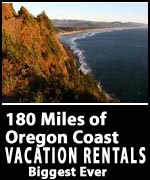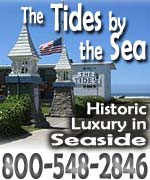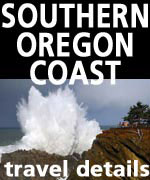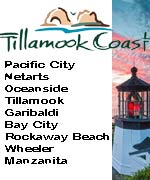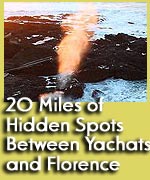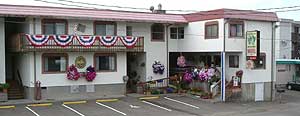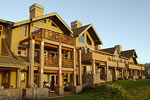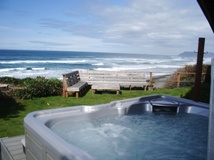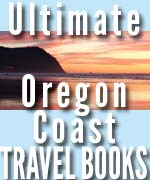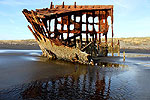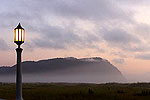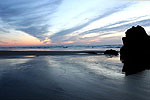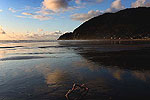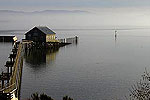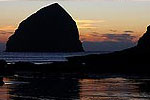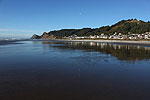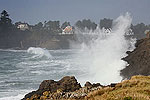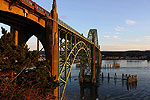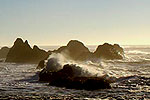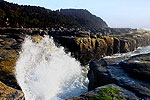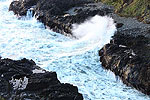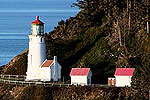 |
Last Chance to View Famed Oregon Coast Cannon |
|---|
Covering 180 miles of Oregon coast travel: Astoria, Seaside, Cannon Beach, Manzanita, Nehalem, Wheeler, Rockaway, Garibaldi, Tillamook, Oceanside, Pacific City, Lincoln City, Depoe Bay, Newport, Waldport, Yachats & Florence.
08/20/08
Secrets of the Season |
Last Chance to View Famed Oregon Coast Cannon
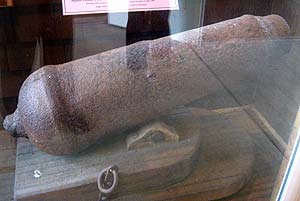 |
| The original cannon found in the 1890's is on display at the Cannon Beach Historical Society |
(Manzanita, Oregon) - The two historic cannon recovered from the beach at Arch Cape in February have been in temporary storage at Nehalem Bay State Park, just off US 101, near Manzanita. But not for long. The cannon will be available for one last public viewing Sunday, August 31 from 1 to 2 p.m.
The discovery of the cannon was exciting enough, as they may be from the same ship whose recovered cannon got the town of Cannon Beach its name back in the late 1800’s. More excitement followed when the discovery garnered the north Oregon coast a ton of media coverage around the nation, and then in May they brought on a visit by the PBS show, "History Detectives."
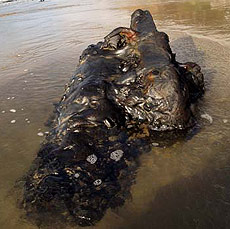 |
| Is this cannon from the same ship as the original cannon that gave Cannon Beach its name? (Photo Seaside Aquarium) |
That episode is already being advertised as part of the kickoff to the show’s news season, coming up soon.
The cannon are normally kept submerged in tanks of water to draw out corrosive salt and protect them from damage caused by exposure to the air, but public viewing is possible when the tank water is emptied and refilled.
The two crusty, concretion-covered objects, and the encrusted chains that held them to whatever ship they came from, won’t have this home much longer. They will be handed over to a professional conservator, after the Oregon Parks and Recreation Department (OPRD) contracts with a qualifying organization. It may take several years for the cannon to undergo conservation, said the OPRD, which means the process of removing the layers of stuff that have surrounded it.
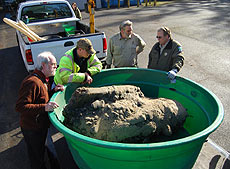 |
| One of the cannon stored at Nehalem Bay State Park. |
Chris Havel, spokesman for OPRD, said the bidding process is about to start, so at this time it is unknown who will be working on the historic objects - but they will be highly specialized.
“We’re dealing with a very few qualified organizations,” Havel said. “We’re talking about educational facilities and so on, some place working in the field of marine archeology. There aren’t many that handle objects buried in the sea and sand. There’s maybe four or five firms we’re talking to.”
What OPRD has been doing is more or less what the conservator will be doing: keeping the objects submerged in water and drawing out the elements that would cause them to rust if they were exposed to the air. But this group will be more detailed about it.
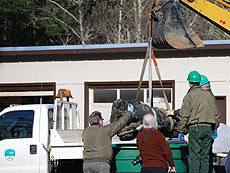 |
| The cannon are lifted into their storage tub after being taken off the beach of Arch Cape in February. |
"They’ll check daily for the salinity, and checking to see it’s down to x amount," Havel said. “They’ll want to slowly loosen the concretion without damaging the underlying cannon or their markings. It’s a long, delicate, painstaking process.”
The concretion that covers them is a hardened, concrete-like substance that comes from elements of the cannon themselves as well as sand and other surrounding elements, all come together over the last 150 years or so.
While in possession of the crew at Nehalem Bay State Park, the concretion has not really changed. Havel said they’ve noticed some sand at the bottom of the tubs every time they drain it, which they believe is likely sand that was in the process of becoming part of the concretion.
The PBS show has endeavored to discover if the cannon were indeed from the USS Shark, which wrecked on the Columbia River Bar in the 1840’s. Fifty years later - just before the dawn of the 20th century - one of its cannon was found at Arch Cape, giving the village to the north its moniker.
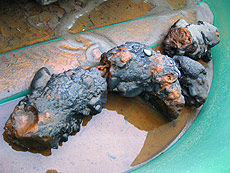 |
| The chains of the cannon are still visible, also encrusted in a mix of sand and iron that have solidified over the last 150 years into a kind of concrete |
Gwen Wright, one of the stars of the Public Broadcasting Service series, was on the coast in May with the show’s camera crew, as well as at Fort Vancouver in Vancouver, Washington.
The PBS show also arranged for x-rays to be taken of the cannon, and the Fuji Corporation donated time on one of their specialized x-ray machines.
Havel said they are being very cautious about forming any firm answer, in spite of the twitching anxiousness of local amateur historians who are quick to conclude the evidence weighs heavily towards these being from the same ship. There is still the great possibility they’re from another ship, as this exact type of cannon was very common at the time.
“The cannon are very similar to what was found in 1898,” he said. “But there are a hundred other shipwrecks out there along the north coast. We just don’t know enough to say for sure. We’re still asking 'What are the origins of the cannon?' "
The public viewing on August 31 will take place in the Nehalem Bay State Park maintenance yard. Parking is limited, and carpooling or alternative transportation is recommended.
|
Tradewinds Motel, Rockaway Beach. All rooms are immaculate and have TV’s, VCR’s and in-room phones w/ data ports. Oceanfronts have queen bed, a double hide-a-bed, kitchen, cozy firelog fireplace and private deck. Both types sleep up to four people. Others are appointed for a two-person romantic getaway, yet still perfect for those on a budget. Elaborate oceanfront Jacuzzi suite has two bedrooms, kitchen, double hide-a-bed, fireplace and private deck, sleeping as many as six. For family reunions or large gatherings such as weddings, some rooms can connect to create two-room and three-room suites. Some rooms pet friendly. 523 N. Pacific St., Rockaway Beach. (503) 355-2112 - 1-800-824-0938. www.tradewinds-motel.com |
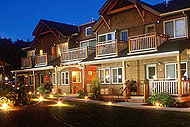 Inn
at Cannon Beach. Beautifully wooded natural setting at quiet south
end of Cannon Beach. Great during winter storms with a new book by
the fireplace – or when the sun is out for family fun and beach
strolling. Handsome beach cottage-style architecture. Lush flowering
gardens and naturalized courtyard pond. Warm, inviting guest rooms.
Continental buffet breakfast. Warm Cookies. Family and Pet Friendly.
Welcome gifts. Smoke-free. Complimentary Wireless Connectivity. Wine
and book signing events. 800-321-6304 or 503-436-9085. Hemlock At
Surfcrest, Cannon Beach, Oregon. www.atcannonbeach.com. Inn
at Cannon Beach. Beautifully wooded natural setting at quiet south
end of Cannon Beach. Great during winter storms with a new book by
the fireplace – or when the sun is out for family fun and beach
strolling. Handsome beach cottage-style architecture. Lush flowering
gardens and naturalized courtyard pond. Warm, inviting guest rooms.
Continental buffet breakfast. Warm Cookies. Family and Pet Friendly.
Welcome gifts. Smoke-free. Complimentary Wireless Connectivity. Wine
and book signing events. 800-321-6304 or 503-436-9085. Hemlock At
Surfcrest, Cannon Beach, Oregon. www.atcannonbeach.com. |
|
The Ocean Lodge. There will not be another property built like this in Cannon Beach in our lifetimes. Rare, premiere ocean front location; handsome, dramatic architecture and tasteful, fun (nostalgic) beach interiors. Overlooks Haystack Rock. 100 percent smoke free. Imaginative special occasion packages. Massive wood burning lobby fireplace. Library w/ fireplace, stocked with impressive book collection. Pet and family friendly. Lavish continental buffet breakfast. In-room fireplaces, mini-kitchens. Jacuzzi tubs in select rooms. DVD players, complimentary movies. Morning paper. Warm cookies. 888-777-4047. 503-436-2241. 2864 Pacific Street. Cannon Beach, Oregon. www.theoceanlodge.com |
|
Arch
Cape Property Services.
Dozens of homes in that dreamy,
rugged stretch between Cannon Beach and Manzanita known as Arch
Cape. Oceanfront and ocean view , or just a short walk from the
sea. |
 |
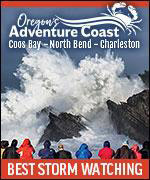 |
RELATED STORIES
Click here for video of Dec. storm aftermath
Oregon Coast Best of Awards for the Year And the winners are: best of Oregon coast restaurants, lodgings, science, odd events in nature and stunning moments for 2007
Watching Transformations of Oregon Coast Beaches Seasons change and so do beaches, revealing different sides and a variety of eye-popping sights
Staggeringly Cool Ideas for Oregon Coast Romance Be it the season of Valentine's or be it any time of the year, Oregon's coastline has essentially cornered the market for cuddle-inducing possibilities and gushy activities for the hand-holding set
Day or Night Mysteries and Merriment on Oregon Coast It's more than just nightlife that comes to life, but the beaches offer major opportunities
Oregon Coast Travel Site Goes Wireless Provides Lodging Reports - Oregon Coast Beach Connection now has mobile lodging and dining listings, along with weekly lodging availability reports
CONTACT / ADVERTISE ON BEACH CONNECTION



